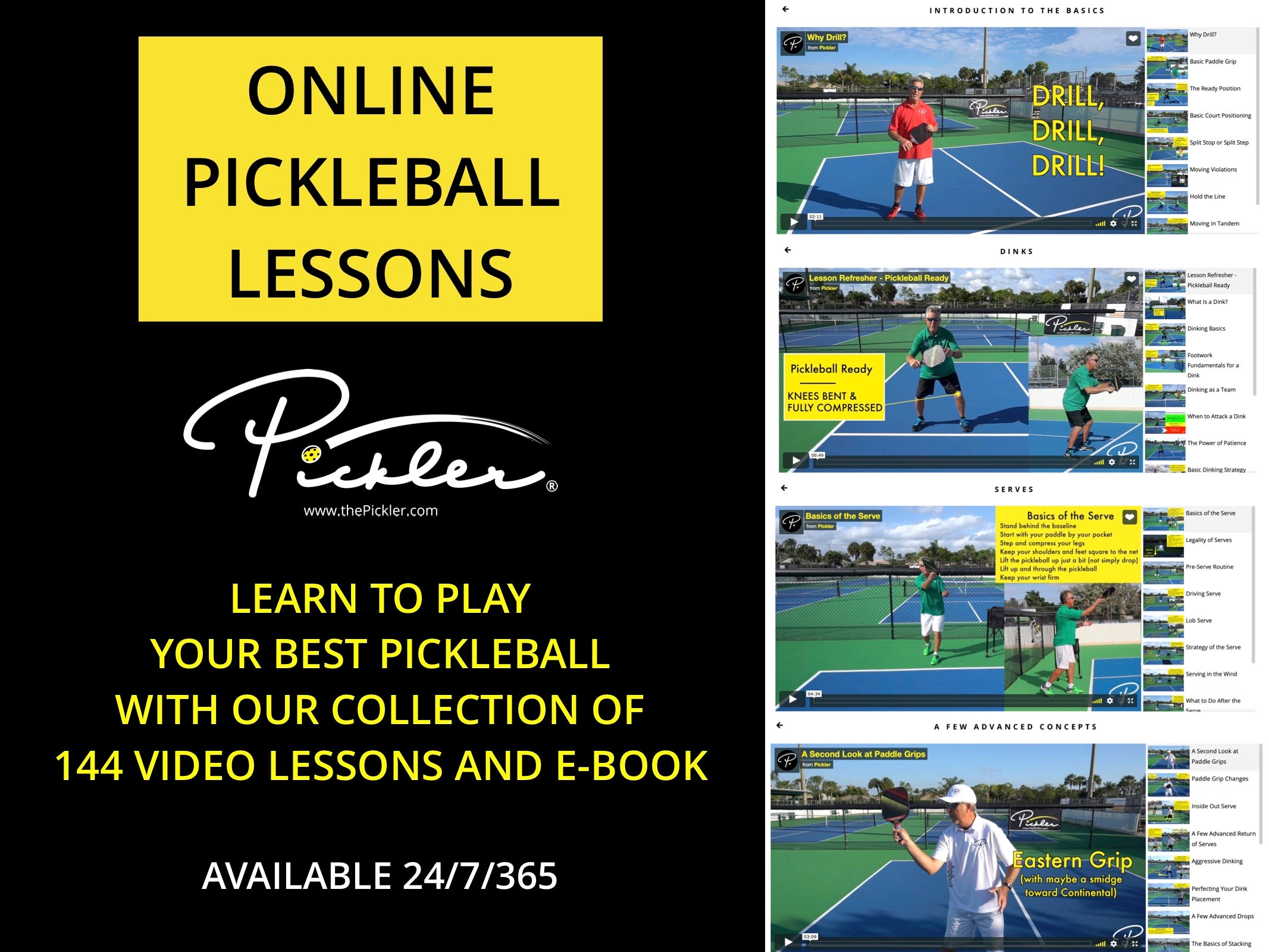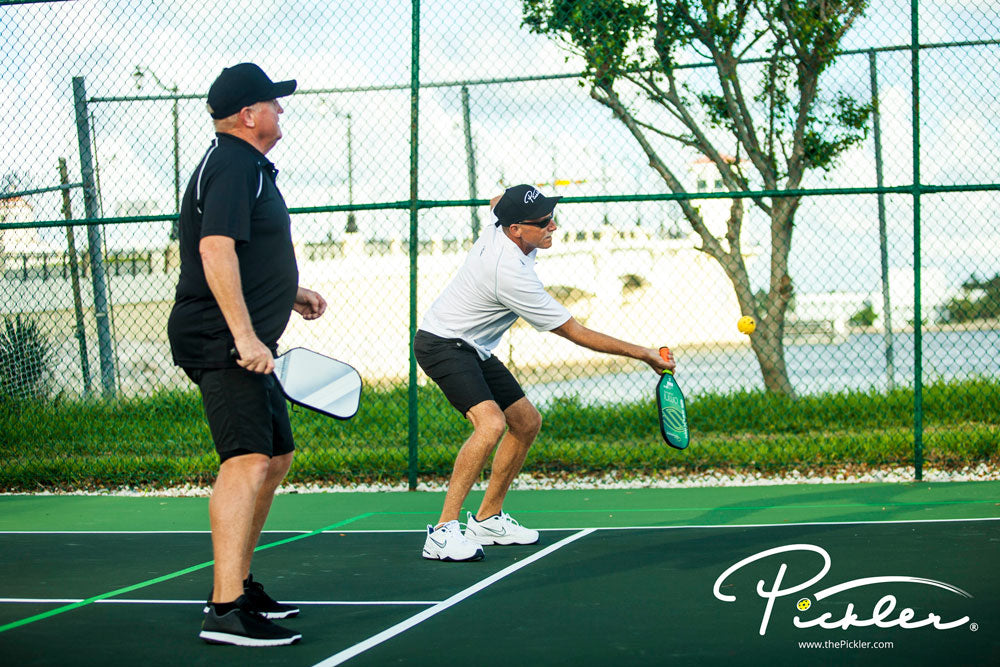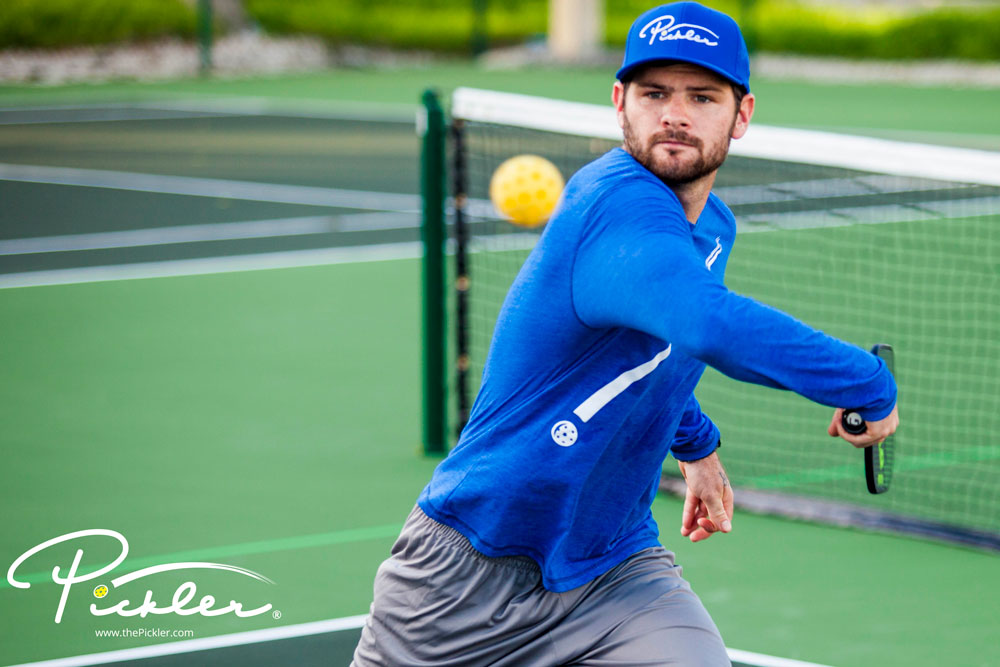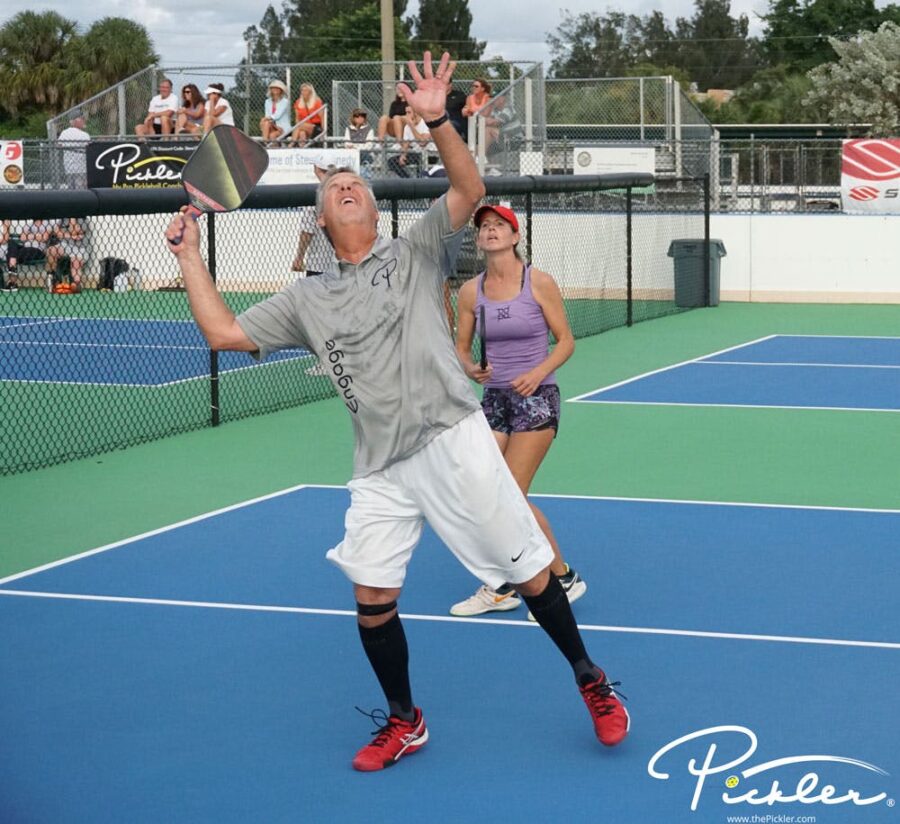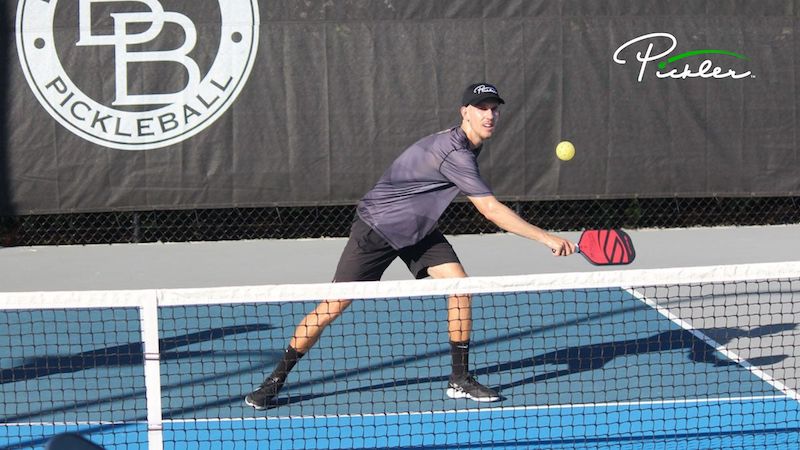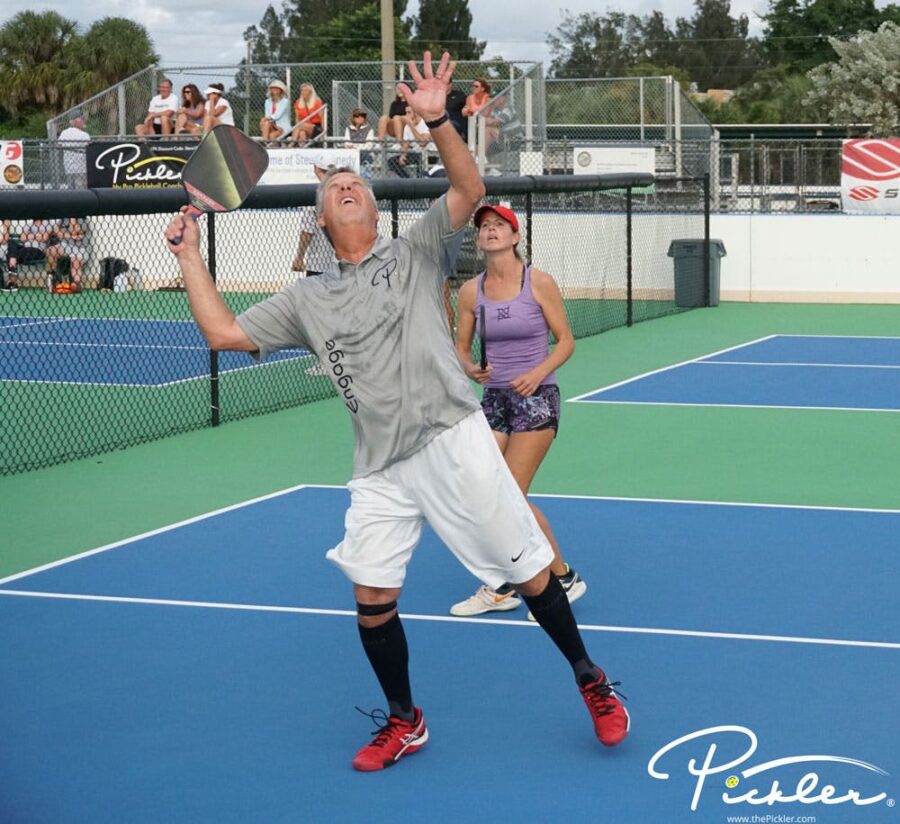Generally speaking, in the sport of pickleball, there is a slight advantage to the receiving team due to the 2-bounce or 3-hit rule (in other words, the rule states that both the serve and return of serve must bounce). The serving team has the challenge of hitting a quality 3rd shot in order to be able to move into the Non-Volley Zone line (or Kitchen line), where most points are won on the pickleball court. This is why the 3rd shot in each pickleball rally is one of the most important shots.
With that said, how do you keep this slight advantage as the receiving team? What should you do on the 4th shot in order to minimize the all-important 3rd shot by the serving team? This pickleball blog will break down some pickleball strategies on what the receiving team should do on the 4th shot in doubles pickleball.
Court Positioning for the Receiving Team in Pickleball
First, let’s start with court positioning as you prepare for the 4th shot. As the receiving team, only the player receiving the serve should be behind the baseline. The other partner should already be positioned at the Kitchen line, as he or she will not make contact with the pickleball in the first two shots (in other words, the 2-bounce or 3-hit rule does not come into play for the partner that is not receiving the serve).
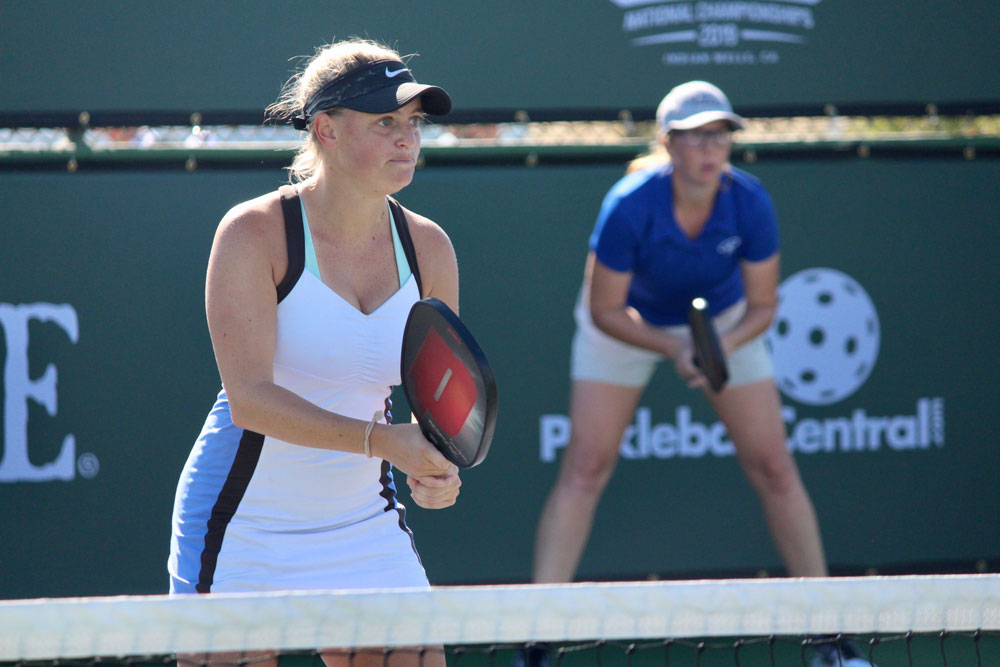
With respect to the partner that is receiving the serve, once he or she hits the serve and returns it back to the other side of the pickleball net, he or she should immediately join his or her partner at the Kitchen line. This partner hitting the return of serve should follow the flight of the pickleball and move in to the Non-Volley Zone line in the same direction as he or she hit the return of serve. By following the flight of the pickleball as the receiving team, you will (1) create angles of attack for you; and (2) minimize angles of attack for your opponents. More specifically:
- If you hit the return of serve down the line, move in to the Non-Volley Zone line on straight line and follow the pickleball down the line.
- If you hit the return of serve down the middle, move in to the Non-Volley Zone line on a bit of an angle and follow the pickleball down the middle.
- If you hit the return of serve crosscourt, move in to the Non-Volley Zone line on an angle and follow the pickleball crosscourt, such that you will probably end up close (if not on or over) the dividing middle line at the Kitchen line.
During any of these scenarios, both of the partners on the receiving team must remain linked together, such that both follow the flight of the pickleball and have similar angles of attack. The receiving team should work together and stay linked within 6 to 8 feet of each other.
Pickleball Strategies on the 4th Shot
Once you are at the Kitchen line as the receiving team and prepared to receive the 3rd shot from your opponents, it is important to keep your advantage, hold the Kitchen line, and continue to apply pressure on the serving team. To do this, consider the following pickleball strategies on the 4th shot of every pickleball rally:
1. Keep the Serving Team Back at the Baseline
As noted above, most points in pickleball are won at the Non-Volley Zone line. As a result, it is important to keep your opponents back off of the Kitchen line as much as possible. So, on the 4th shot, your goal is to keep the serving team back. Hit shots deep in the pickleball court at your opponents’ feet, and make it as difficult as possible for the serving team to come in to the Kitchen line.
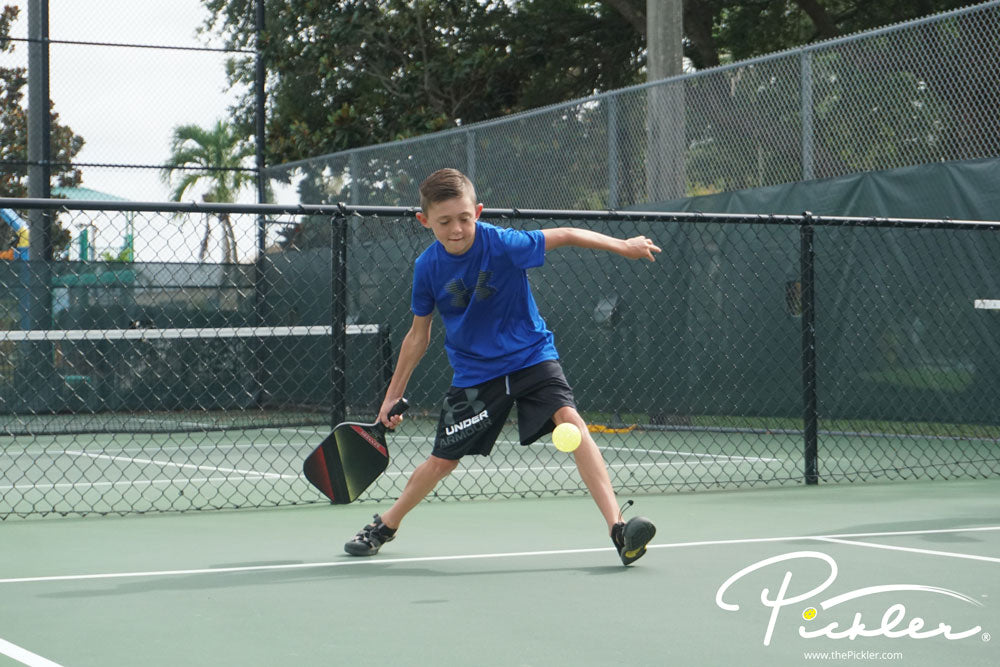
2. Hit Down on the Pickleball
When possible, be aggressive with your 4th shot—for instance, be aggressive when the serving team hits the pickleball high above the pickleball net. In this case, you can hit down on the pickleball to keep the pickleball low at your opponents’ feet. However, if the serving team hits a quality 3rd shot that is below the pickleball net—whether it be a drive or drop—do not be as aggressive. Unless you can impart a lot of top spin on the pickleball, you will not be able to make an aggressive shot on a quality 3rd shot by the serving team. If the serving team hits a quality 3rd shot, they have earned the right to come into the pickleball net. Again, do you best to keep the pickleball down in the court.
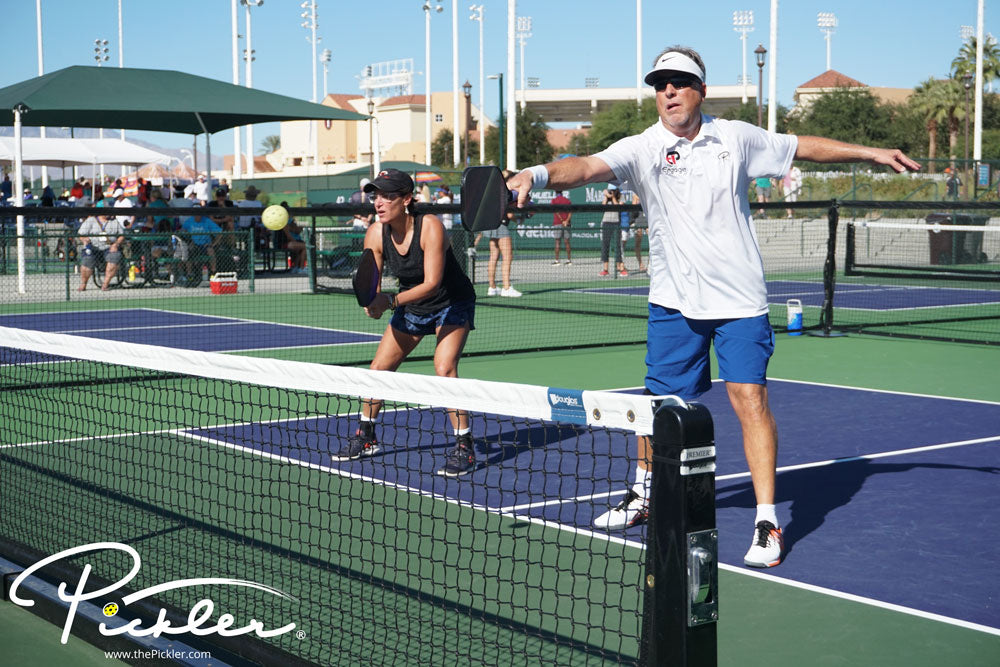
3. Target the Usual Suspects
When hitting the 4th shot, hit your typical targets. This includes the following:
- Hit the pickleball down the middle to cause your opponents to fight over hitting the 5th shot. This is especially true if your opponents are staggered on the pickleball court—in other words, when one partner is up and one partner is back in the court;
- Hit the pickleball to the opponent that is further back in the pickleball court in an effort to keep your opponents as far back in the court as possible;
- Hit the pickleball to your opponents’ weaknesses, which is oftentimes their backhand sides;
- Hit the pickleball down into the court at your opponents’ feet—in particular, your opponents’ feet on their weak sides (which, again, is oftentimes their backhand sides); and/or
- Hit the pickleball using your strongest shot or in a way that plays into your strengths as a pickleball player.
4. Beware of the Poach
When hitting your 4th shot, beware of a set play by the serving team called the “Shake and Bake.” This set play is when one partner of the serving team drives the 3rd shot, while the other partner crashes (i.e., runs to) the pickleball net. The partner that crashes or runs to the pickleball net is trying to put away the 5th shot if you or your partner pop the 4th shot up into the air. Beware of this strategy.
To avoid being the victim of this “Shake and Bake” strategy, keep your 4th shot low in the pickleball court and even consider hitting the 4th shot behind the serving team player that is aggressively coming into the pickleball net (in other words, hitting the pickleball in the direction that the aggressively moving pickleball player started from).
5. Use a Drop Volley at Your Own Risk
As noted above, the general rule is to keep the serving team back. However, a drop volley—a soft shot into your opponents’ side of the Kitchen—can be effective if your opponents have poor mobility or are standing back behind the baseline. With that said, use the drop volley at your own risk, as you could be inviting the serving team into the Non-Volley Zone line and losing your advantage as the receiving team. This shot is less effective if not executed well or if your opponents have quick feet and good mobility.
6. Let the Out Balls Go
One of the hardest things to do on the pickleball court is to let the out balls go. Detect whether the serving team’s 3rd shot is going to land out of bounds—whether a wide drop or a long drive or even lob. Out balls are easy points for you and your partner. Hitting an out ball keeps your opponents in the point, which is obviously something that you want to avoid. So, be sure to execute the hardest shot in pickleball… the shot you don’t take when you let the out balls go!
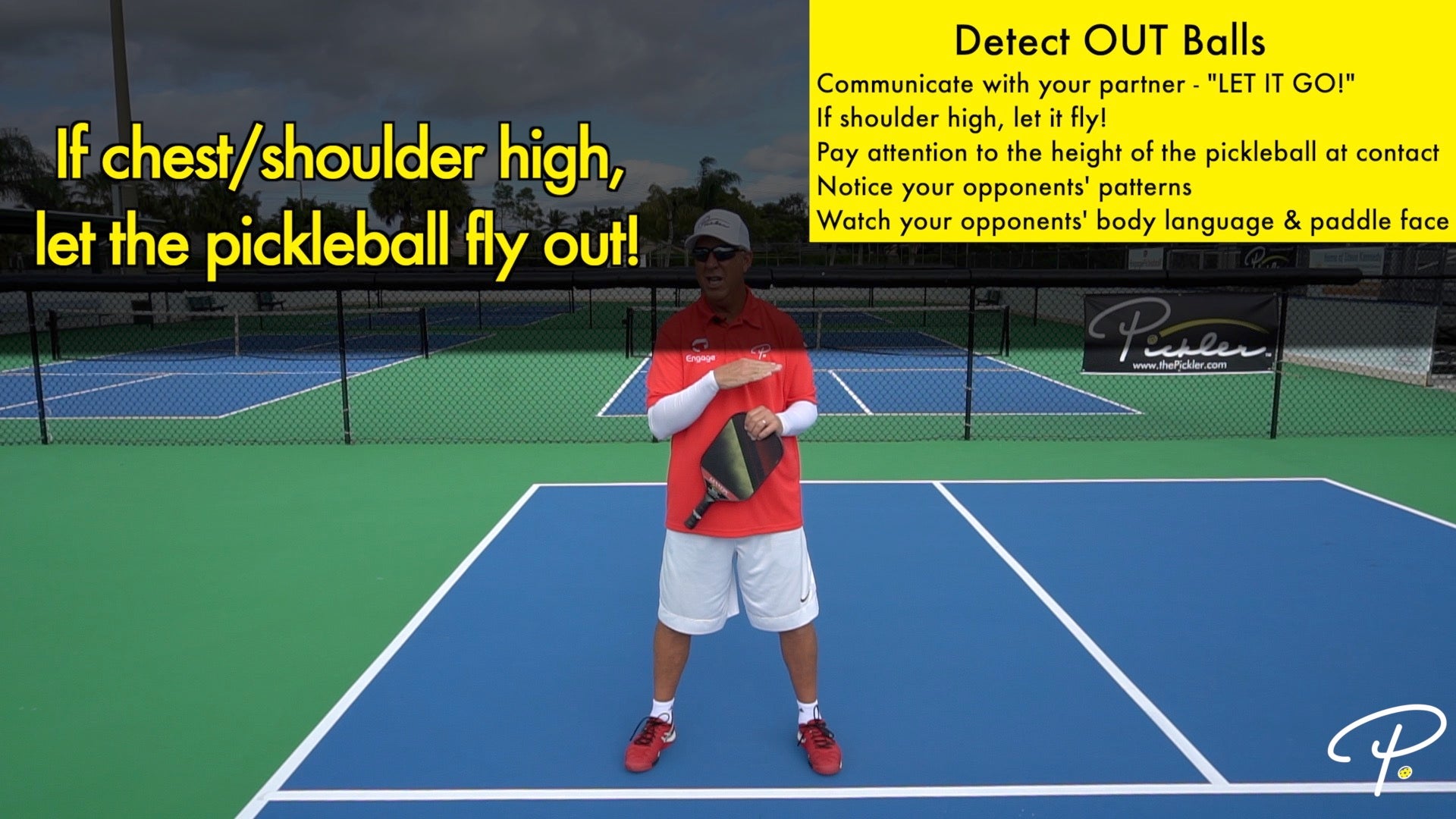
7. Be Aggressive If You Are the Partner Starting at the Kitchen Line
If you are the partner on the receiving team that is already standing at the Non-Volley Zone line, be slightly aggressive on the 4th shot in terms of covering the middle. In other words, if the serving team hits the 3rd shot down the middle, consider being a bit aggressive, covering the middle, and hitting this shot. This is because your partner is moving in to the Kitchen line, so your partner may be on the move. It is more difficult to hit the pickleball on the move, as opposed to a stationary position (which, if you are the partner at the Kitchen line, then you would already be in a stationary position). You do not need to be overly aggressive and cover too much of the pickleball court, but consider covering the middle if you are able to hit a stronger shot than your partner running into the pickleball net.
Try these pickleball strategies the next time you on the pickleball court. As the receiving team, your goal is to keep your advantage, hold the Kitchen line, and continue to apply pressure on the serving team.
WANT MORE PICKLEBALL TIPS AND STRATEGIES?
Struggling with those bangers on the pickleball court? Learn 7 strategies on how to defeat the banger now.

Plus, if you want more pickleball tips and strategies on every aspect of your pickleball game, check out Pickler’s online video lesson collection called My Pro Pickleball Coach. My Pro Pickleball Coach is a fraction of the price of one clinic or even one lesson, and features over 140 video lessons (over 7 hours of instruction!), as well as a corresponding e-book. These online video lessons are available on demand 24/7 and breakdown every aspect of the sport of pickleball, including pickleball drills, strategy, and advanced concepts, so you will play your best pickleball.
